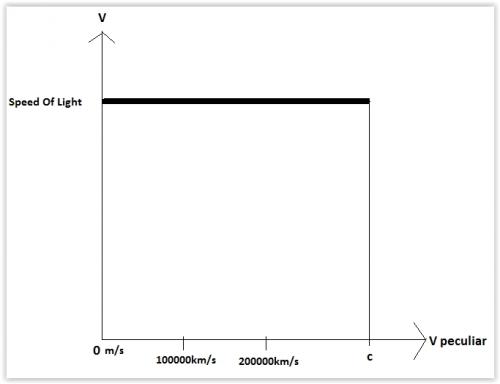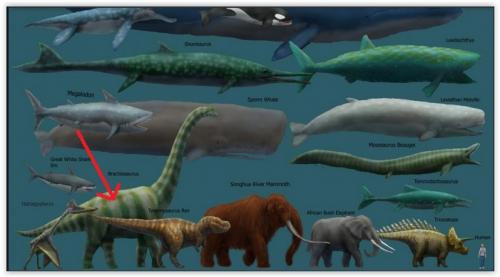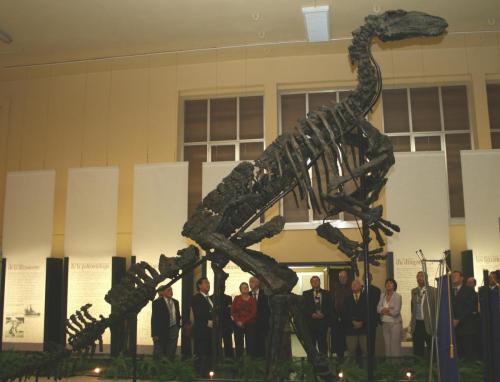-
Posts
6258 -
Joined
-
Last visited
-
Days Won
2
Everything posted by michel123456
-

Actual vs apparent universal expansion rate
michel123456 replied to StringJunky's topic in Astronomy and Cosmology
Oh yes, you are right, I am confusing recessional speed with expansion. Recessional speed is increasing with distance, that is Hubble's law. In my stubborn mind, it looks terribly like an acceleration, even if there are no forces involved. And I remember in this same Forum in a thread someone explaining very clearly that a geometric scale factor produces also an effect similar to acceleration. But I cannot spot the thread, it was some years ago. -
People on Nias Island in Indonesia move a megalith, c. 1915. Digitally restored. It is interesting to note the wooden frame. As if it was a package that protect the stone from breaking.
-
I didn't bring expansion in the discussion. My question was about a world without expansion. From what I understand the answer to my question is However, we are actually observing such things (which brings automatically expansion, ok ok cool down). ------------------ We know because of the spectral lines (of hydrogen if I am not mistaken). Light that comes from those objects arrives at c. As I am proposing. At the right side of the diagram (that does not exist following your posts) ---------------------- What I was trying to say is that with a very very slight differentiation to the interpretation of Relativity, the expansion of space-time is not necessary. The pieces of the puzzle are: c is the upper bound velocity of information (1) c is the upper bound velocity of causality (2) c is the upper bound velocity of input.(3) c is invariant (4) (1) means that you cannot directly receive or send any information faster than c (2) means what it says. Faster than c would violate causality (3) means that you cannot input to anything a velocity higher than c (4) means what it says And that's it.
-

Actual vs apparent universal expansion rate
michel123456 replied to StringJunky's topic in Astronomy and Cosmology
Yes but as far as I can understand, expansion is already an acceleration. Because receding speed increase with distance. -
So it should not be complicated to accept that for the right part of the diagram (over-c velocities), c is still invariant. And it observed to be so. . Even if we are obliged to introduce expansion in order to explain something that we have declared being physically impossible. (you said "impossible")
-

Why it was possible for dinosaurs to exist ?
michel123456 replied to Dlouro's topic in Evolution, Morphology and Exobiology
Yes. I am looking for reference of plant gigantism at the time dinosaurs lived. To speak frankly, I didn't even found anything at the carboniferous period. Some today's plants are about the same size. Other kind of plants though. -
I don't understand your comment. Expansion is able to transport clusters of galaxies. Expansion allow photons to "jump the gaps" that appear when space expands. It is not a speed, I agree, but expansion "expands" information transfer and causality. Anyway My question is still about invariance of c in a world without expansion.
-

Why it was possible for dinosaurs to exist ?
michel123456 replied to Dlouro's topic in Evolution, Morphology and Exobiology
Yes that make sense. But I cannot find (quickly) any solid reference. -
I still wonder if you understand my question. If you draw a graph of peculiar velocities and corresponding velocity of light you obtain something like this On the X axis you have peculiar velocities of objects (relative motion) On the Y axis you have the speed of light. Since SOL is constant, on the diagram it is represented as a solid line. The line stops abruptly at Vpeculiar = c Is that correct so far? And if it is correct, does that make sense that if (IF) relative motion exceeds c (for any reason*) then SOL will remain c. Which means that the Speed of Light emanating from objects moving at over-c velocity will still be observed as c. Even in a world without expansion. *I understand very well that expansion is a way to explain over-c apparent velocity, but that is another story.
-
Sorry for that. The author of the link seems to think that. Of course under the space expansion prism.
-
Why? Are you also one of those who think photons can stop mid-air as in the link at the begin of this thread? Right. But if A and B are unrelated there is no upper limit for unrelated events. Anyway I don't want to jump into conclusions. My question is about the "no matter the velocity" versus "nothing can travel faster than c". IMHO IF and if an object A travels faster than c relative to object B (where A and B are not bound by any causality), then A will be observable by B and reversely, because the "no matter the velocity" statement still holds.
-

Why it was possible for dinosaurs to exist ?
michel123456 replied to Dlouro's topic in Evolution, Morphology and Exobiology
Yes, plants were larger too. That cannot be a coincidence. If, as you propose, the dinosaurs were larger because the plants were larger, then the question resumes to: why were the plants larger? -
That is part of my question. If c is invariant, there is a way. Could you please re-word the bold part?
-
I don't know. Maybe things that are totally unrelated. Objects that are not bind by causality.
-
In a world without expansion of space. Look I know the understanding of Relativity is that nothing can go faster than C. That means: in a world without expansion the entire Universe is observable. Is that correct so far?
-
Why don't you simply ask the question? Why would suddenly c drop to zero for objects traveling at c and thus become unobservable. Why would the photons go backwards when the source is going faster than c? Especially after having stated that velocity doesn't matter because c is an invariant.
-
It is another thing of "violating causality" and "being unrelated through direct causality".
-
No no. I simply mean: You can keep c as an invariant, you can keep "No matter how fast that object was moving". You can keep c as the velocity of causality. You can keep all of Relativity and keep being consistent with observation. Don't you agree? The only thing that you must drop off is "nothing can go faster than c" and replace it with "c is the max velocity of causality". IOW the universe does not care about the relative velocity of anything, there is no upper bound. Is that so dramatic?
-
OK. That is what our Theory says. Now we are looking in our telescopes and discover that objects go away from us at more-than-c velocities. IOW we have a confirmation of "No matter how fast that object was moving". My question is: why don't we stick to this. Why do we have to introduce other kind of displacement (expansion)?
-
OK You have an object A moving away from you at velocity V. This object A emits light. What is the velocity of light (SOL)for the followings: V=0, SOL=c V=1m/s, SOL=c V=10m/s, SOL=c V=100000m/s, SOL=c V=299999km/s, SOL=c Is the above correct? And then why would we think that suddenly the value of V matters when V gets higher than that? In a world without expansion.
-
Anyone here that does understand the question?
-

What are you listening to right now?
michel123456 replied to heathenwilliamduke's topic in The Lounge
Today in Athens Muse -
So my question again. Why would there be unobservable objects? Why would we think that light coming from some objects would suddenly go backwards? What is the principle that says that light would suddenly have a negative velocity? Especially when we we know for sure that SOL is a constant.
-

Why it was possible for dinosaurs to exist ?
michel123456 replied to Dlouro's topic in Evolution, Morphology and Exobiology
-

Why it was possible for dinosaurs to exist ?
michel123456 replied to Dlouro's topic in Evolution, Morphology and Exobiology
Then why evolution didn't produce that kind of animals (dimensional speaking) again? Or to put the question differently, why are all current land animals smaller than dinosaurs were?





